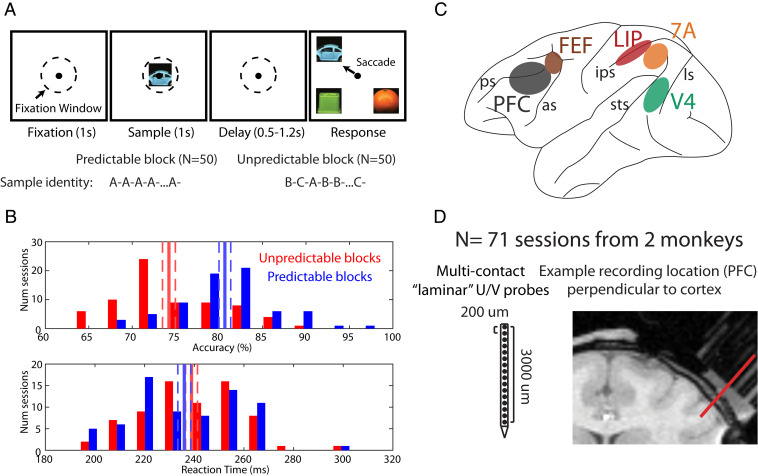Fig. 1.
Task design, recordings, and behavior. (A) Task design: after a 1-s fixation interval, a sample stimulus (one of three pictures) was shown for 1 s. After a variable delay, the sample reappeared at one of four locations (always randomized). Monkeys saccaded to the sampled stimulus. The sample identity was either randomized (unpredictable blocks) or held constant (predictable blocks). (B) Behavioral performance across 71 sessions. (Upper) Accuracy on the task during predictable vs. unpredictable blocks. (Lower) Same, but for reaction time. Solid red/blue bars denote the mean performance and dashed bars denote the mean ± SEM across sessions. (C) Recorded brain areas. PFC: prefrontal cortex, FEF: frontal eye fields, LIP: lateral intraparietal area, 7A: posterior parietal area 7A, V4: visual area 4. (D) Multielectrode 16 channel Plexon U/V probes with 200 μm site-to-site spacing. MRIs were used to select grid locations for laminar (perpendicular) access in areas located on cortical gyri: V4, 7A, and PFC. An example penetration in PFC is shown.

